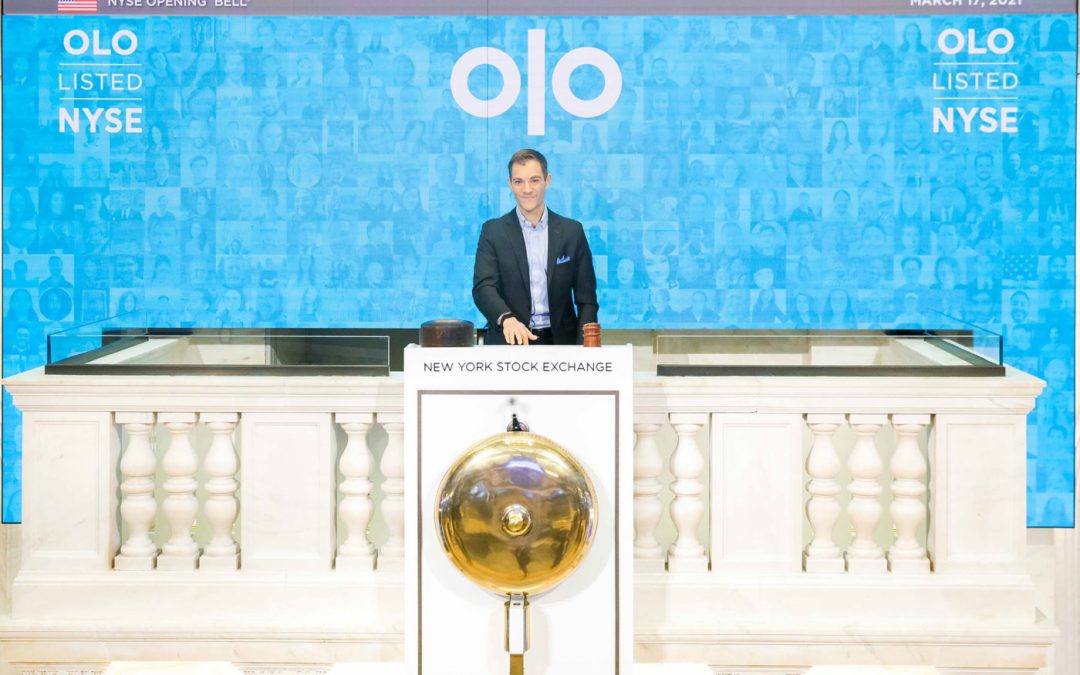Olo continued its post-IPO victory lap after posting its first quarterly earnings results as a public company. The delivery integration and logistics company for enterprise restaurants had a lot of great highlights from the first quarter of 2021.
Revenues were up 125 percent year-over-year to $36.1 million. Gross profit was up 150 percent, suggesting the company did things more efficiently as it scaled up. Overall, earnings per share came in at 3-cents, well ahead of the 1-cent expected by analysts. As for the final tally on the IPO, the company announced it raised $485 million from the process.
The company also added several new enterprise brands to its client roster, including Bloomin’ Brands, the parent company of Outback Steakhouse; Carrabba’s Italian Grill; and Bonefish Grill, among others. The nearly 800-unit Culver’s also joined, as did Nando’s U.S. and Union Square Hospitality Group. It also tapped into the virtual restaurant craze on the grand, celebrity scale with Guy Fieri’s Flavortown Kitchen and Goop Kitchen.
CEO Noah Glass said the growth of virtual restaurants means even greener pastures for the company going forward.
“These virtual brands demonstrate that Olo’s a total addressable market [that] is not bounded by the current number of restaurant locations, [but] rather is tied to total restaurant industry transactions,” said Glass. “And this number is not fixed, but expanding with population growth and greater consumer preference for prepared food, off-premises consumption and digital ordering.”
All the growth and expansion brought the company to a cumulative 1 billion orders—500 million of which came in 2020 alone.
In all, it was another quarter of exceptional growth after a year of breakneck acceleration for the company as the restaurant industry shifted to digital ordering. Glass said his younger self may have been surprised by the portion of transactions Olo touches.
“Years ago, when I would speak to team Olo about my long-term vision for our company, I would reference a milestone moment, in which we achieved 51 percent of the sales of one of our customers,” he said during the earnings call. “I said that moment would represent Olo becoming the majority order channel for that customer and others would soon follow, the dawn of digital ordering primacy. We’re now seeing Olo restaurant customers who are processing 100 percent of their transaction volume through the Olo platform.”
Now, he said, he sees Olo’s “destiny is to touch every transaction, add value to every transaction and derive revenue from every transaction in the restaurant industry.”
During the earnings call, Glass said the company also reaffirmed relationships with third-party delivery platforms. A very public dispute briefly put its relationship with DoorDash in question, but as both companies rely greatly on each other, that soon passed. Glass touched on the new agreement to assuage any remaining doubts.
“This new three-year agreement reinforces the long-term commercial partnership between Olo and DoorDash and will enable us to continue to work together on products and features that will unlock value for both companies as well as our shared customer base,” said Glass. “From a financial perspective, this new agreement is in line with our expectations and we are really excited for the path ahead.”
For the overall company, CFO Peter Benevides admitted during the call that the good quarter was not a high hurdle to leap. He called it a “relatively easy compare, since Q1 2020 was the last quarter prior to the onset of COVID-19.”
Over that year, he said the company grew to 69,000 active locations, a 42 percent increase year-over-year and a 7 percent increase through the first quarter. Each of those locations also grew volume, on average.
“Average revenue per unit or ARPU, which represents the average quarterly platform revenue we earn on a per location basis continue to trend well,” said Benevides. “That said, for the first quarter we generated an ARPU of approximately $525, a 61 percent increase year-over-year, and an 11 percent increase sequentially.”
The only issue highlighted by analysts is the stock is still trading pretty high. At current levels, the stock trades in the range of 30 times annual sales. That suggests stock holders see some major promise, but buyers may be reluctant to buy at such high prices.
Olo guides to revenue in the range of $33.9 million to $34.4 million and income in the range of $2.3 million to $2.7 million in the second quarter. It expects full 2021 revenue to fall between $140.4 million and $141.9 million with income in the range of $13.3 million and $14.5 million.


